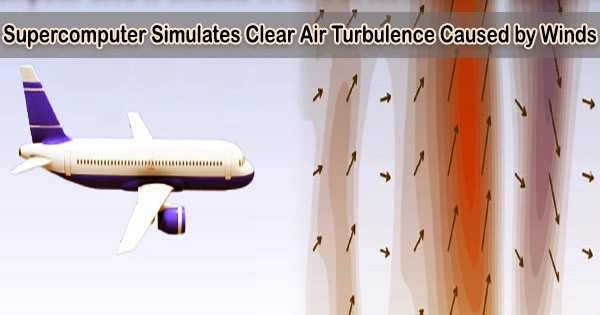Using the fastest supercomputer in Japan, a study team from Nagoya University was able to recreate air turbulence that occurs in the vicinity of Tokyo on clear days. For the purpose of developing a more precise forecasting model, they later contrasted their findings with flying data.
The research was reported in the journal Geophysical Research Letters.
Although air turbulence is typically linked with inclement weather, it can occur on clear, sunny days as well. These turbulent air movements, known as clear air turbulence (CAT), can happen even when there are no apparent clouds or other meteorological disturbances.
Although the precise causes of CAT are not well known, wind shear and atmospheric instability are thought to be the main contributors.
CAT poses a high risk to aviation safety. On an otherwise quiet day, the abrupt turbulence can cause injury to passengers and crew, damage to the aircraft, and interference with flight operations.
Foreseeing and avoiding anticipated turbulence, pilots rely on data from other aircraft, weather radar, and atmospheric models. However, CAT is extremely difficult to identify and anticipate because it exhibits no apparent indications, such as clouds or storms.
Winds whirl and swirl, causing abrupt changes in airflow and eddies that can rock an aircraft. Therefore, to better understand CAT, scientists model it using large-eddy simulation (LES), a computational fluid dynamics technique used to simulate these turbulent flows.
The results of this research should lead to a deeper understanding of the principle and mechanism of turbulence generation by high-resolution simulation and allow us to investigate the effects of turbulence on airplanes in more detail. Since significant turbulence has been shown to occur in the limited 3D region, routing without flying in the region is possible by adjusting flight levels if the presence of active turbulence is known in advance. LES would provide a smart way of flying by providing more accurate turbulence forecasts and real-time prediction.
Dr. Ryoichi Yoshimura
However, one of the biggest problems with LES is the computing cost, despite its significance to research on air turbulence. Simulating the complex interactions involved in LES requires high levels of computing power.
The research team from Nagoya University used the Fugaku supercomputer, an exascale computer, to intricately mimic the process of turbulence creation using high-resolution LES. It is a high-performance computing system, currently ranked as the world’s second fastest supercomputer.
Using Fugaku’s immense computational power, Dr. Ryoichi Yoshimura of Nagoya University in collaboration with Dr. Junshi Ito and others at Tohoku University, performed an ultra-high-resolution simulation of the CAT above Tokyo’s Haneda airport in winter caused by low pressure and a nearby mountain range.
They discovered that the Kelvin-Helmholtz instability wave, a particular kind of instability that happens at the interface between two layers of air with different velocities, was what was responsible for the disturbance in wind speed.
A wave-like effect is produced as one layer pulls on the layer with lower velocity since it has a higher velocity than the other layer. Turbulence is produced by the phenomena wherein air waves expand in the west and collapse in the east.
The team sought to verify that their simulated vortices agreed with actual data after performing their calculations.
“Around Tokyo, there is a lot of observational data available to validate our results,” said Yoshimura. “There are many airplanes flying over the airports, which results in many reports of turbulence and the intensity of shaking. Atmospheric observations by a balloon near Tokyo were also used. The shaking data recorded at that time was used to show that the calculations were valid.”
“The results of this research should lead to a deeper understanding of the principle and mechanism of turbulence generation by high-resolution simulation and allow us to investigate the effects of turbulence on airplanes in more detail,” said Yoshimura.
“Since significant turbulence has been shown to occur in the limited 3D region, routing without flying in the region is possible by adjusting flight levels if the presence of active turbulence is known in advance. LES would provide a smart way of flying by providing more accurate turbulence forecasts and real-time prediction.”





